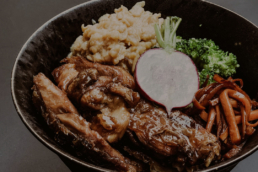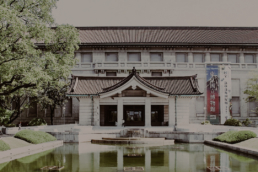Far East Film Festival 22, this year in streaming
Far East Film Festival 22, this year in streaming
Author: Erika
This year due to the COVID-19 emergency many countries found themselves having to reorganize, or even cancel, several events. However, our friends from the Far East Film Festival decided to continue with the 22nd edition and found a perfect way to respect the rules. In fact, only for this year, the Far East Film Festival will be held from June 26th to July 4th via LIVE STREAMING, also thanks to the MyMovies live platform!

Face to face, Heart to Heart is this season's motto. Taken from the homonymous hit of the eighties, this is the perfect synthesis of this new edition.
An edition that does not give up and that will take place online! Face to face, through the thin glass of the displays, heart to heart, because the festival community in Udine is literally one big family.
From 26 June to 4 July, the structure of FEFF 22 will be remodeled. In fact, we are not only talking about a switch up, with the films in competition to watch on-demand but an authentic transformation. All content will be adapted, as far as possible, to the dynamics of streaming.
During these months of lockdown, the audience has already attended en masse the MyMovies platform as a virtual theatre. In fact, it will be here that the online streaming of all the films in competition will take place. Obviously, the whole will not only be a reservoir of titles but the meeting point for all the participants of the Far East Film Festival.
Moreover, from June 30th to July 2nd, Focus Asia, the festival's Industry area, will also be online, with the FEFF in progress section (the first and only European platform dedicated to Asian films in post-production), the project market and a rich webinar program.
The accreditation campaign will start in a few days, on June 1st to be exact and soon the staff of FEFF 22 will share the complete list of the broadcast schedule. Let the umpteenth journey, the umpteenth challenge, the umpteenth adventure begins!
Japan History: Yamamoto Tsunetomo
Yamamoto Tsunetomo, the samurai philosopher
Author: SaiKaiAngel | translation: Erika
Yamamoto Tsunetomo (1659 - 1721), also known by the Buddhist name Yamamoto Jōchō was not only a military man but also a great philosopher. We decided to talk about this Samurai also because of his importance in the literary field.
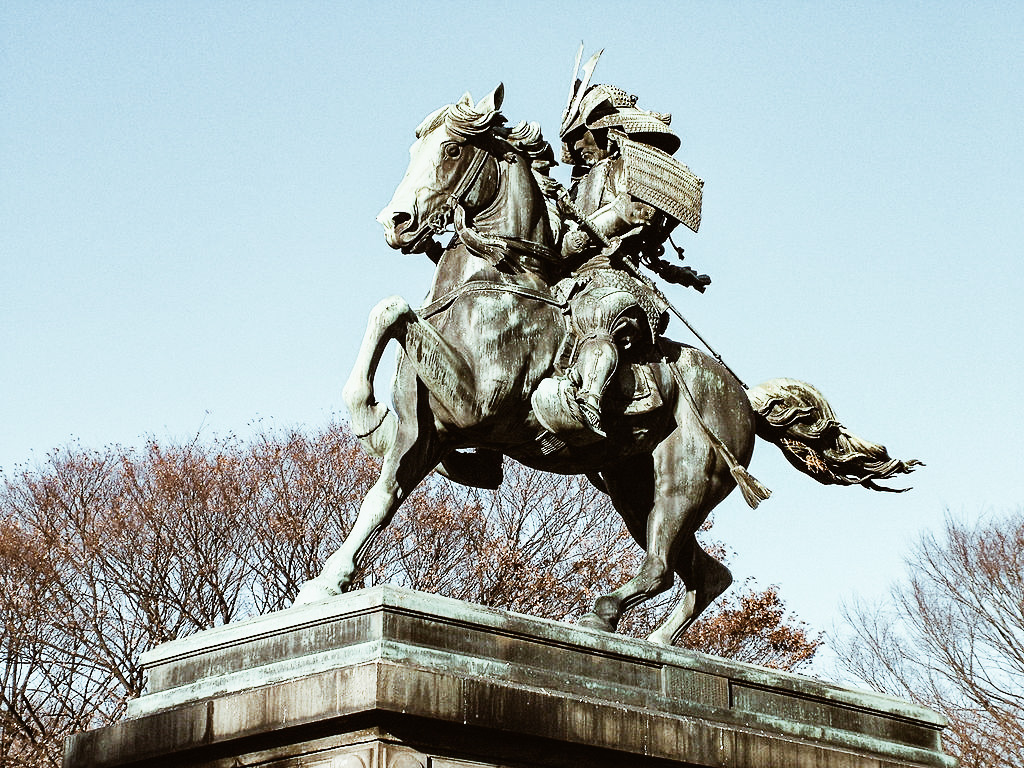
photo credits: wikipedia.org
The life of Yamamoto Tsunetomo
Samurai of Saga Prefecture in the province of Hizen (Kyūshū), he entered the service of Mitsushige Nabeshima at the age of 9. At the age of 20 he met the Buddhist monk Tannen, who had left the temple in protest of the condemnation of another monk, and Ishida Ittei, a Confucian scholar counselor of Nabeshima who had been exiled for more than 8 years because of his opposition to the decision of a daimyō.
In 1700, at the death of his patron, he did not choose to accompany him in his death with seppuku, because Nabeshima had always condemned that practice, so he decided to continue to respect his will. Yamamoto Tsunetomo decided to take Buddhist vows and take the name Jōchō by retiring to a hermitage in the mountains after some problems with Nabeshima's successor.
After becoming a Buddhist monk of the Zen sect Sōtō, between 1709 and 1716 with his student Tashiro Tsuramoto, he composed the Hagakure, the work on the spirit and the code of conduct of the samurai. Tsunetomo asked the disciple never to publish these thoughts but to set the book on fire, but the young Tsuramoto decided to make it public under the name of Nabeshima Rongo, or "the Nabeshima Dialogues." The book was adopted for centuries as a code of the Samurai and was only printed in 1906 with the title Hagakure ("In the shade of the leaves").

photo credits: amazon.com
Hagakure's main theme is death, not as the end of life, but as the elimination of the ego. Hagakure is a collection of moral principles and advice as behavioral norms and historical news. This book contains some rules of a simple nature, for example "how to dismiss a servant", while others are part of Bushidō, of that set of principles that constituted for centuries the ethics of all Japanese people.
The book written by Yamamoto Tsunetomo, which is originally 11 volumes, has never been fully translated because it is often very specific about Japanese culture to be difficult for Italians to read.
The Hagakure became one of the most famous texts on bushidō around the 1930s.
Some of the most famous phrases in the book
"I have discovered that the Samurai Way is death: you must prepare for death from morning till night, day after day."
"The Samurai Code is to be sought in death. Meditate daily on its ineluctability. Every day, when nothing disturbs our body and our mind, we must imagine ourselves torn by arrows, rifles, spears, and swords, swept by impetuous waves, wrapped in flames in an immense bonfire, electrocuted by a lightning bolt, shaken by an earthquake that leaves no escape, plunged into an endless precipice, agonizing over an illness or ready to commit suicide for the death of our Lord. And every day, unfailingly, we must consider ourselves dead. This is the essence of the Samurai's Code."
"Every morning and every night we should continually think about death, feeling we've been dead forever; in this way, we'll be free to move in any situation."
"We can maintain good relationships with others by giving them the importance and avoiding misunderstandings with good manners and with true humility, doing things well even when they are not useful to us but to others as if it were the first time we meet.
"Those who are impatient end up ruining everything and fail to accomplish great things. Those who do not care about time will complete their mission very quickly."
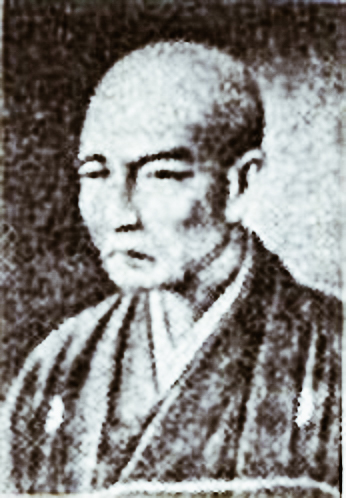
photo credits: wikipedia.org
Things to do during Quarantine: Traveling to Japan through Movies
Embark on a Journey to Japan through movies
written by: Erika | source: Tokyo Weekender
The long quarantine is almost over but travel is still impossible, so let's continue our section on things to do in quarantine, and today we will explain how to discover Japan through movies.
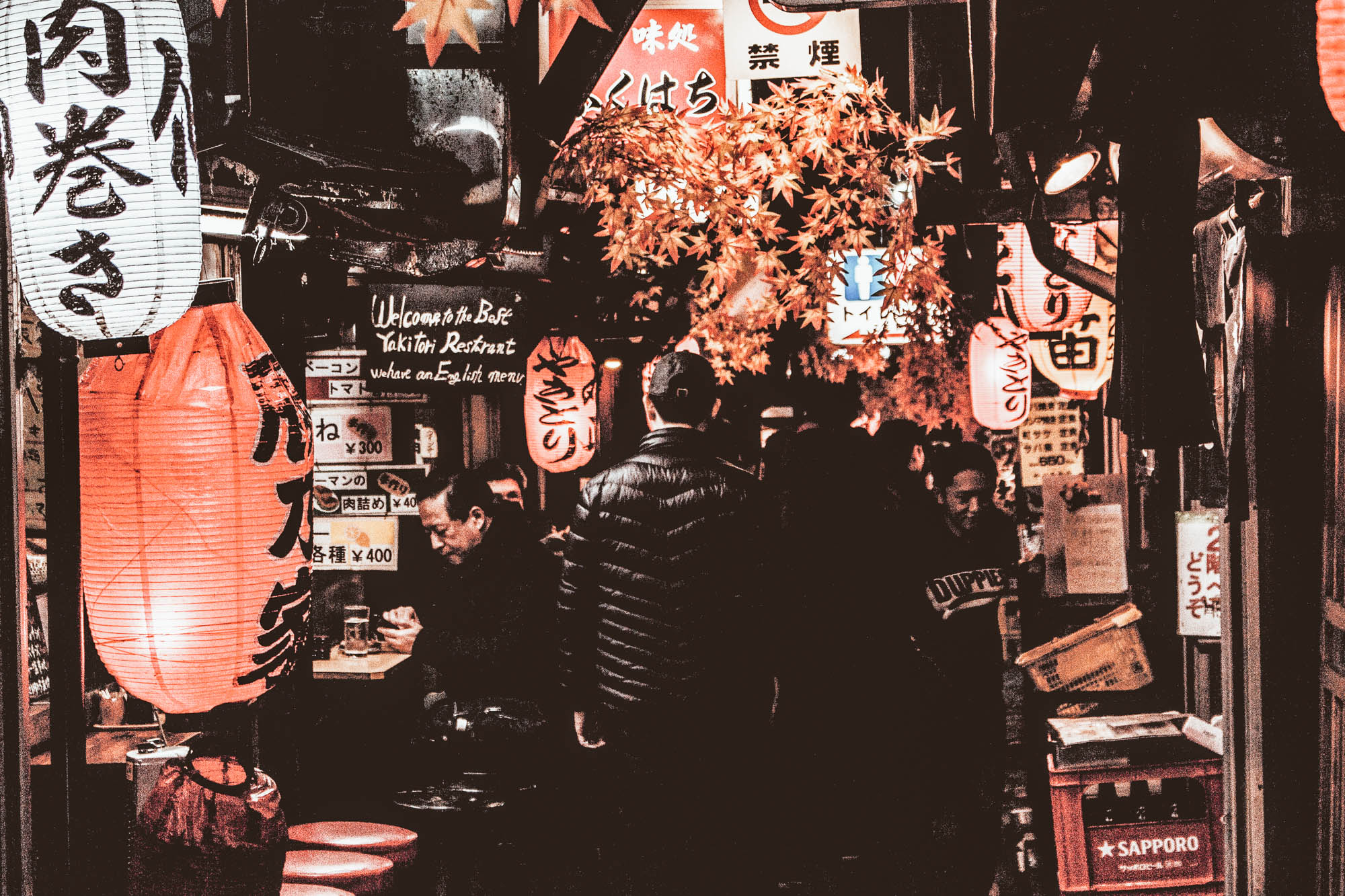
With the coronavirus pandemic, the world's borders closed, airports blocked and flights canceled prevented people from traveling. This not only caused the tourism business to drop but also prevented us from getting to know and explore distant countries such as Japan. Precisely for this reason, today we share with you a simple method to be able to explore the land of the Rising Sun directly from your home. In fact, here are 5 films that will help you experience Japan as we know it today and as it was long ago.
Departures (2008)
An Oscar winner, this beautiful film tells the story of the city of Sakata and its surroundings in the Shonai region of Yamagata prefecture, north of Japan. A work of art from the world of cinema, the film tells of a man who returns to his hometown after a failing career as a cellist. Here, the man begins a new life and a new career as a traditional funeral director. Unhappy with the situation but fighting against the prejudices connected to his new job, the man begins to love his new profession.
Initially regarded as a taboo, Departures then proclaimed the international recognition of director Yojiro Takita. Along with this, the building used for filming has become a very popular film location. However, the film's memorable scenes were shot in the countryside around the Gakko River and the snowy Mount Chokai. This feature is perfect for those who want to know the most rural locations in Japan and the more traditional customs of the rural life of the Rising Sun.
Memoirs of a Geisha (2005)
Famous film and Oscar winner, Memoirs of a Geisha is one of those must-have films related to Japan. From the award-winning director Rob Marshall, this movie has indeed changed the face of Kyoto tourism. Although the film was not entirely shot in this city, the story lets us travel to the Kiyomizu-Dera temple, through the torii of the Fushimi Inari and the Arashiyama bamboo forest.
The film tells the story of the life of a 9-year-old girl whose father sells her to a Geisha house. In fact, we will set off on a journey that will transform this little girl into one of the most sought after geisha of the time. Not only does this film help us discover landscapes and traditions that are now almost lost, but it brought the culture of Geisha to the west for the first time. However, at the same time, Memoirs of a Geisha is also a celebration of Japan's harmony and unique ways of life.
In fact, the traditional tea ceremony, the beauties of the Zen gardens, the classic Buddhist temples, the traditional houses of the Edo period in the historic Gion district are the backdrop to this story. A perfect way to describe magical Kyoto and the experiences that can be faced in the ancient capital of Japan.
Lost in Translation (2003)
The film that launched the careers of Sofia Coppola and Scarlett Johansson, together with Bill Murray, this movie tells the story of a couple of friends who meet in a hotel in Tokyo. Filmed almost entirely in Japan, here we can see the contrast between the nightlife of the city and the colorful and noisy districts of Tokyo, together with the calm of the temples.
Winner of two Academy Awards, the film is a journey into modern Tokyo life. Moving from the neon graphics of the Kabukicho streets in Shinjuku, up to the beautiful images of the famous Shibuya crossing, the Tokyo Tower and the Rainbow Bridge in Odaiba. In addition, the film also shows us the countryside when the protagonist embarks on a journey to Kyoto. In fact, from the shinkansen, we can see the flowing of the Japanese countryside arriving then to the Nanzenji and Heian Temples. Let's not forget the beautiful scene where Murray plays golf in Kawaguchiko with the iconic views of Mount Fuji.
In short, a must-see movie for anyone who wants to find out more about Japan.
Rhapsody in August (1991)
One of the last films of the revolutionary director Akira Kurosawa, this film is set in a small town near Nagasaki. With a compelling but minimalist narrative, the story is about four teenagers who visit their grandmother during the summer. With a backdrop of cicadas, forest adventures, rickety wooden houses, and Buddhist ceremonies, the kids face a perfect holiday in the countryside of Japan.
In a bucolic portrait of Japanese country life, the four teenagers spend more time with their grandmother, listening to her stories. Subsequently, in the second half of the film, we will be able to see Nagasaki after the war with the bright colors of youth. In fact, the four young people embark on a journey to see the bombing sites and the school where their grandfather was a teacher when the explosion occurred.
A film that allows us to know the world of Japan after the war, but which at the same time becomes a denunciation of the guilt of the wars themselves. Controversial but at the same time enlightening, Rhapsody in August is a truly unmissable film for anyone who loves cinema and Japan.
Times of Joy and Sorrow (1957)
This time the acclaimed director Keisuke Kinoshita tells us the story of a lighthouse keeper, his wife, and their travels in 10 different lighthouses along the coast of Japan. A relationship and travels that cover 25 years of marriage, through this film we discover Japan through several years starting in 1932.
The famous site of Kannonzaki, the nation's first lighthouse, worked as a set for the opening scenes. In fact, here we now find a statue of the protagonists of the film. Thanks to the amazing work of the director of photography, through this film we have the opportunity to embark on a journey through the various lighthouses of the nation. In fact, in this regard, we see the beautiful scenes of the Hajikizaki lighthouse on the island of Sado, a wonder for our eyes.
Subsequently, the couple's journey takes us to some of the most remote areas of Japan and the adventures and misadventures of the protagonists introduce us to the lighthouse's staff.
An exciting film that accompanies us on a postcard trip of the shores of Japan, between waves and cliffs, absolutely not to be missed.
Things to do in quarantine: Building a miniature Akihabara
Building miniature Akihabara in your home
written by: Erika | source: TimeOut Tokyo
Although things are starting to get better here in Italy, we continue our section on things to do in quarantine, and today we share with you how to build a mini Akihabara.


Akihabara is one of the favorite destinations for all otaku and fans of Japan, a historic district dedicated precisely to everything that is manga, anime, and video games. In this delicate moment, we are not yet allowed to travel. However, there is no need to take the plane to get to know new places and visit the ones we have already seen. In fact today we share with you the opportunity to recreate miniature Akihabara directly from your home!
In Akihabara, there are not only many places dedicated to that world that we would call nerd, but there are also many clubs and shops dedicated to various hobbies. One of them is the Mansei Club, a corner offering a variety of fun games, origami instructions, and paper models all for free.
If you're still stuck at home and don't know what to do, you can now recreate the iconic Tokyo neighborhood with these detailed paper models. In fact, the streets of Akihabara are all reported in these detailed scale reproductions. Creating this model is very simple, just follow the instructions listed in these PDFs available for free for download. In fact, these reproductions perfectly show the buildings of Akihabara and also where these buildings must be positioned. Although the instructions are in Japanese, it is actually very simple to follow them also thanks to the various illustrations.

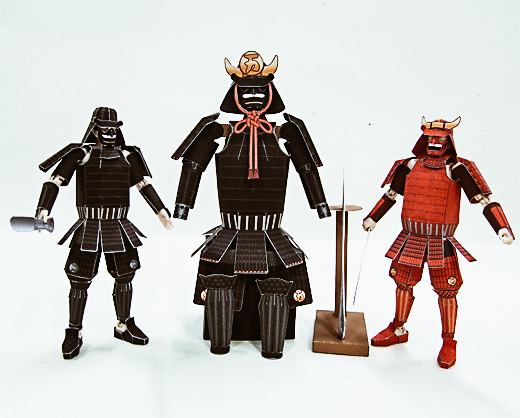
However, if building an entire neighborhood seems too complicated for you, don't worry there are many other possibilities. In fact, Niku no Mansei offers more than 50 paper models that you can download for free. With a design that varies from reproductions of famous Samurai up to reproductions of the most famous Japanese foods. In short, here we find the opportunity to satisfy every taste and every type of hobby! You just have to choose your model, download it, and get to work! We are curious to see the results!
Things to do in quarantine: Learn Japanese cuisine
Learn Japanese cooking with 5 YouTubers
written by: Erika | source: TokyoWeekender
We continue our column on things to do in quarantine and today we talk to you how to learn Japanese cuisine with the help of 5 YouTubers.
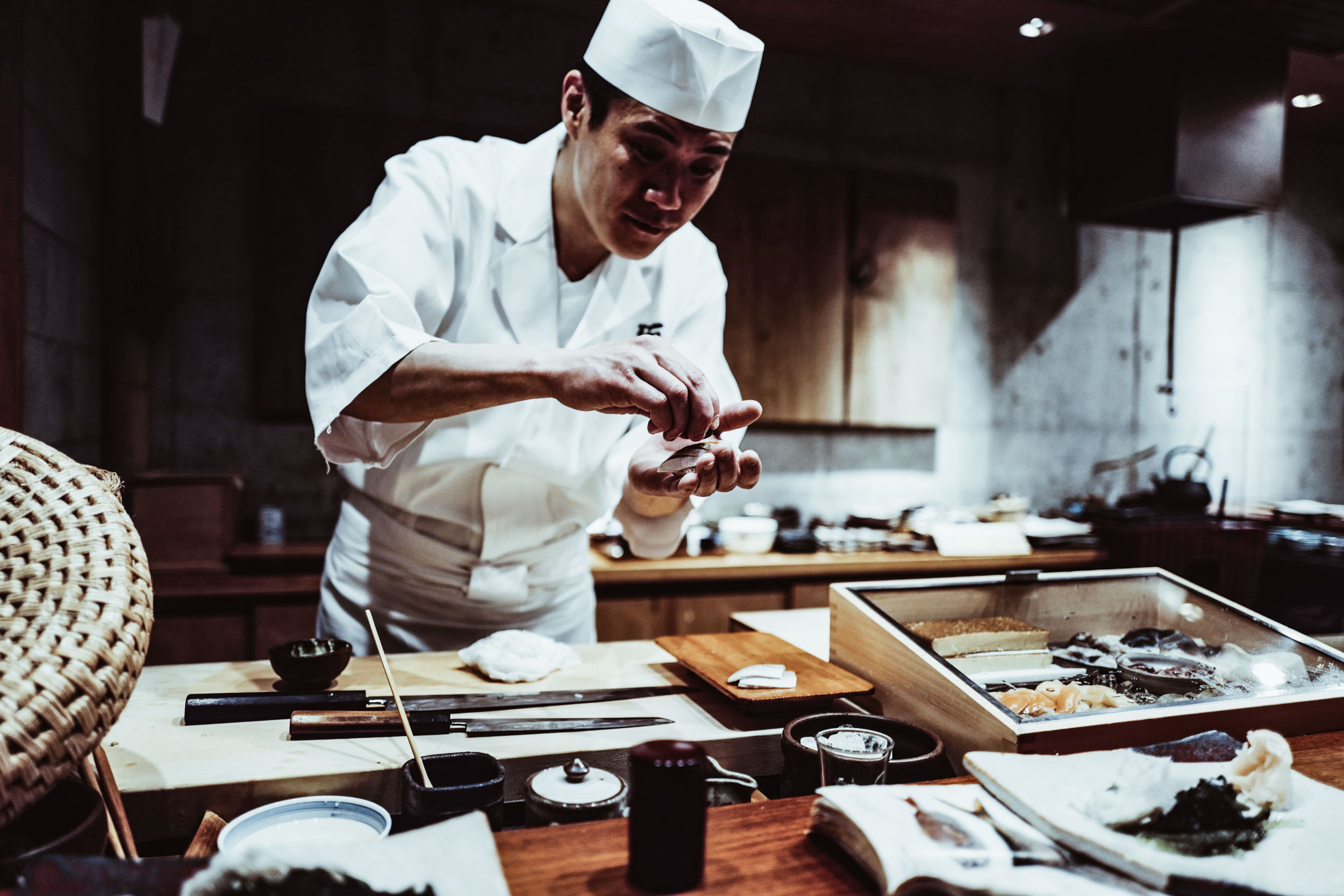
In these lockdown days, we are all trying our hand at new recipes and experimenting with new combinations of flavors. Here are 5 YouTubers to follow in order to learn Japanese cuisine and try out some dishes at home!
Tasty Japan
They are our favorites. A lot of simple recipes to follow, with all the ingredients easily recoverable in any part of the world you live in. From desserts to first courses, from quiches to second courses. Authentic and fun, Tasty Japan engages the viewer with educational videos and many guests. Almost all the videos have English subtitles and all the presenters are very funny and full of energy, making even the most complicated dishes easy to do. Videos that fall into the #foodporn category par excellence, make sure you're on a full stomach when you try to cook these delights.
Ochikeron
Mother of two, the protagonist of the channel Ochikeron creates dishes to allow the whole family to cook together. In fact, the simplest dishes on the channel can be cooked together with the little ones too. However, more complicated dishes that require more time and energy are available for all those fearless enough to try all these new recipes. All this makes this channel a unique world for all those kitchen projects to be created together. Furthermore, if you are fed up with the usual dinners, this is the right place to find new ideas.
Japanese Cooking 101
With a huge selection of videos, Japanese Cooking 101 not only offers dishes easy to make, but more complicated processes can also be found. From Karaage to fried rice with chanko nabe, a perfect hot-pot style dish for the winter, this youtube channel is a real catalog of Japanese cuisine. In fact, we can find a lot of recipes to experiment and each video shows a complete list of ingredients together with instructions on how to create the dish. Although other channels have some entertainment, Japanese Cooking 101 has a more didactic and dry approach, but very easy to follow.
Diaries of a Master Sushi Chef
If, however, like many Westerners you love sushi too, Hiroyuki Terada's channel is the one for you! The diaries of this master sushi chef will teach you how to juggle knives, fillets, and much more. In fact, on this channel, you will find methods to create delicious sushi but also dishes such as chicken teriyaki and many other izakaya-style delights. With collaborations of the caliber also of Chef Ramsey, this is the channel for all those who want to seriously try their hand at learning the art of sushi.
Aki’s Japanese Recipes for Vegans
Vegan and vegetarian restaurants are difficult to find in Tokyo, this has led to the creation of various YouTube channels including that of Aki. In fact, on this channel, you can find the best recipes for all those who love unconventional cuisine. A real sensorial experience in HD for an accessible channel and with the instructions written in Japanese and English. In addition, Aki, the protagonist of the channel, always takes the time to better explain his recipes and ensure that the dishes always look good.
TENOHA Milano & TENOHA Ramen, ready for the Take Away
TENOHA Milano and TENOHA Ramen are ready for the Take Away!
written by: SaikaiAngel | translation: Erika
It's time to start again and we can do it in the best way together with TENOHA &| TASTE and TENOHA &| RAMEN special Take Away and delivery menu.
In these months of lockdown, many have suffered the nostalgia of the two most beautiful places in Milan! We are talking about TENOHA &| TASTE and TENOHA &| RAMEN where not only can you feel as if you were at home, but you can also savor and experience real Japan! While we wait for the reopening, you can now enjoy TENOHA &| TASTE and TENOHA &| RAMEN special Take Away and delivery menu.
Are you ready to live TENOHA in your home? Do it NOW and be surprised with the tasty menus not to be missed and already available !!
TENOHA &| TASTE • TAKE AWAY

MENU
GYU DON - € 9
Bowl of rice with beef, onion, soy sauce, and sake
TERI YAKI DON - € 9
Rice bowl with chicken in teriyaki sauce and vegetables
NORIMAKI [VEGAN] - € 7
Sushi roll with lettuce filling, carrot KIMPIRA, boiled spinach (seasoned with NIKIRI KOMBU DASHI sauce), zucchini, sauteed peppers
EBI YAKIUDON - 10 €
Stir-fried udon with shrimp and vegetables
YASAI YAKIUDON - 10 €
Udon stir-fried with vegetables
and AVAILABLE FROM MAY 19:
TENOHA BENTO, with many vegetarian portions and a second choice:
KARAAGE - € 12
Fried chicken marinated with ginger and soy sauce and sake
SALMON YUAN - € 13
Grilled marinated salmon in yuan and Yuzu sauce
YASAI ITAME - € 13
Udon stir-fried with vegetables
TERIYAKI BURGER - 11 €
Chicken sandwich in teriyaki sauce accompanied by french fries
SIDE DISHES
KARAAGE - € 5
Fried chicken marinated with ginger and soy sauce and sake - 3 €
Salad with Yuzu Ponzu sauce and EVO oil
OPENING HOURS
Lunch | 12:00 - 14:30
Dinner | 18:30 - 21:30
Monday closed
For orders, call 02 8088 9868.
For Delivery, you can contact: Deliveroo | UberEats
[ngg src="galleries" ids="6" display="basic_thumbnail" thumbnail_crop="0"]
TENOHA &| RAMEN • TAKE AWAY

MENU
There is something very special exclusive for the TAKE AWAY:
"DO IT YOURSELF" RAMEN
SHOYU RAMEN
Ramen in soy-based chicken broth served with a slice of braised pork, spinach, marinated egg, bamboo, nori seaweed, and bean sprouts
NOODLES ONLY + BROTH - € 6
TOPPING (a slice of braised pork, spinach, marinated egg, bamboo, nori seaweed, and bean sprouts) - 2,5 €
SPICY MISO RAMEN
Ramen in miso chicken broth served with spicy chicken breast, marinated egg, spinach, bamboo, spring onions, carrots, nori seaweed, and bean sprouts
NOODLES ONLY + BROTH - € 7
TOPPING (spicy chicken breast, marinated egg, spinach, bamboo, carrots, nori seaweed, and bean sprouts) - 2,5 €
MISO RAMEN
Ramen in miso-based chicken broth served with braised pork, marinated egg, spinach, bamboo, spring onions, carrots, nori seaweed, and bean sprouts
NOODLES ONLY + BROTH - € 7
TOPPING (braised pork, marinated egg, spinach, bamboo, carrots, nori seaweed, and bean sprouts) - 2,5 €
MAZESOBA
Ramen in miso-based chicken broth served with braised pork, marinated egg, spinach, bamboo, spring onions, carrots, nori seaweed, and bean sprouts
NOODLES + RAMEN SAUCE + TOPPING - 11 €
RAMEN
CHASHUMEN - € 19
Ramen in soy-based chicken broth served with 5 slices of braised pork, marinated egg, spinach, bamboo, spring onions, nori seaweed, and bean sprouts
SHOYU RAMEN - € 13
Ramen in soy-based chicken broth served with a slice of braised pork, spinach, marinated egg, bamboo, spring onions, nori seaweed, and bean sprouts
SPICY MISO RAMEN - € 14
Ramen in miso chicken broth served with spicy chicken breast, marinated egg, spinach, bamboo, spring onions, carrots, nori seaweed, and bean sprouts
MISO RAMEN - € 13
Ramen in miso-based chicken broth served with braised pork, marinated egg, spinach, bamboo, spring onions, carrots, nori seaweed, and bean sprouts
MAZESOBA - € 15
Ramen in miso-based chicken broth served with braised pork, marinated egg, spinach, bamboo, spring onions, carrots, nori seaweed, and bean sprouts
VEGAN RAMEN - € 16
Ramen in vegetable broth, sesame cream, and soy milk served with fried tofu, bamboo, spring onions, sweet potato fries
* EXTRA TOPPING *
NOODLES + 1 €
NI TAMAGO + 1,5 €
VEGETABLES + € 2
CHICKEN + 2,5 €
SNACKS
EDAMAME - € 3
Boiled soybeans with salt
NI TAMAGO - € 3.5
Marinated boiled egg served with bean sprouts and sweet and sour sauce
ALGAE SALAD - € 5
Wakame seaweed, carrots, edamame, bean sprouts
Accompaniment: sesame sauce or wasabi shoyu and shiso sauce
KABOCHA KOROKKE - 4 € / pc
Japanese pumpkin croquette, potatoes (contains egg)
YASAI KOROKKE - 4 € / pc
Japanese potato and vegetable croquette
KARAAGE - € 8
Fried chicken marinated in soy sauce, sake, oyster sauce, garlic and ginger
Extra topping: special Karaage sauce + 1 €
YAKI GYOZA RAVIOLI ON THE PLATE - 5 € / 5pcs
Grilled ravioli with pork filling, shiitake mushrooms, and savoy cabbage
or
Grilled ravioli with vegetable filling (spinach dough)
AGE GYOZA FRIED RAVIOLI - 7 € / 5pcs
Fried ravioli with pork filling, shiitake mushrooms, and savoy cabbage
or
Fried ravioli with vegetable filling (spinach dough)
DON
CHASHU DON - € 9
Bowl of rice with braised pork, marinated egg, spinach, and sweet and sour sauce
KARAAGE DON - € 10
Bowl of rice with fried chicken marinated in soy sauce, sake, oyster sauce, garlic, and ginger, served with spinach and sweet and sour sauce
TAKIKOMI GOHAN (Taste Shio Ramen) - € 8
Steamed rice in shio broth with chashu pork, wakame seaweed, edamame, spring onions, and red ginger
Variation: Spicy rice + 1 €
• GOHAN |ご 飯 - 4 € Bowl of white rice
OPENING HOURS
12:00 - 14:30
18:30 - 21:30
Closed on Tuesday
* Order only on site
For Delivery, you can contact: Just Eat | UberEats
[ngg src="galleries" ids="5" display="basic_thumbnail" thumbnail_crop="0"]Finally life, finally Japan, FINALLY TENOHA!For all the latest information and to stay up to date with TENOHA news, follow the instagram of TENOHA Milan and TENOHA Ramen.
Things to do during Quarantine: Visit the museums of Japan virtually
Visit every museum in Japan, it's possible but only virtually
written by: Sara | source: Tokyo Weekender
Phase two here in Italy has started but traveling is still impossible, so let's continue our section on things to do in quarantine, and today we talk about how to visit the museums of Japan, virtually.
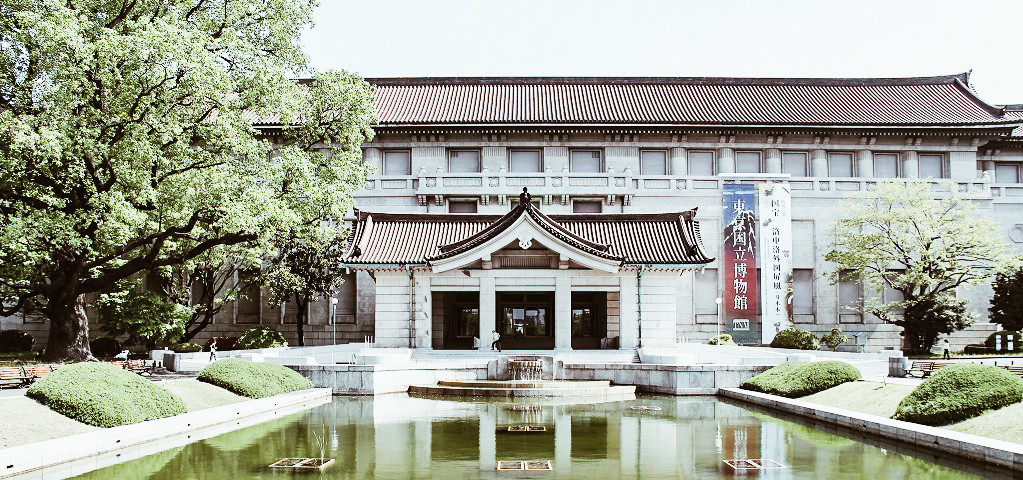
photo credits: https://enjoy.vivi.city/
In an instant, we were overwhelmed by an invisible enemy that has inevitably turned everyone's lives around the world. The spread of the new coronavirus and the pandemic that followed unfortunately led to the closure of many economic sectors, but also places of cultural interest.
The situations are the most varied and we at Japan Italy Bridge want to try not to share sadness, but to give small brackets of leisure to all our readers. In fact, although COVID-19 has deeply affected us all, our mission remains to take you on a journey with us among the wonders of the Rising Sun.
Embracing the slogan #stayathome, the hashtag that has spread in recent months, and thanks to Google Art And Culture and other individual initiatives, Japan has also opened the virtual doors of its wonderful museums and exhibitions, allowing us to visit them comfortably from the living room of our house! The list is very long, but we have selected our favorites. So how about distracting us a bit and starting this virtual itinerary? Between art, fashion, ceramics, and history: let the journey begin!
Chihiro Art Museum
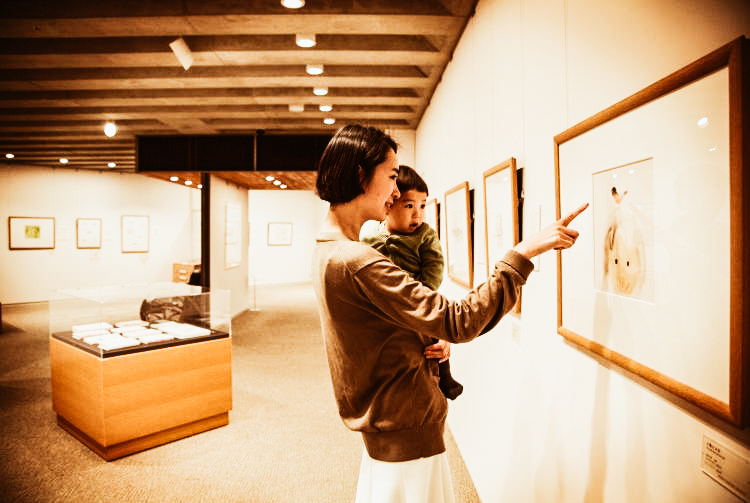
photo credits: gotokyo.org
The Chihiro Art Museum in Tokyo was established in 1977 in honor of the artist Chihiro Iwasaki (1918-1974), famous for his delicate pastel-colored illustration for children. Today this museum also houses exhibits with works by other illustrators from around the world.
Fukuoka Art Museum
Opened in 1979, the Fukuoka Art Museum offers a collection of 16,000 works: tea utensils, Buddhist art, paintings not only local but also famous paintings by Dalì, Mirò, and Chagall.
Fukuoka City Museum
Asian art takes on charm and originality that no other museum in the world will ever be able to offer. In fact, at the Fukuoka City Museum, we find works by artists who "exceed" the standard to create a "contemporary" Asia.
The Keio University Library museum
The Keio university has always been one of Japan's most important and its library includes collections of inestimable value, such as the Gutenberg Bible, ukiyo-e, and over 10,000 rare editions consisting of manuscripts and letters written by leading figures in history.
Kyoto National Museum

photo credits: intk-token.it
The Kyoto National Museum was opened in 1897 with the name of the Kyoto Imperial Museum. In 2014, the museum opened a new wing, the Heisei Chishinkan, to host exhibits from its vast collections, which include over 12,500 traditional Japanese works of art.
Tokyo National Museum
The Tokyo National Museum exhibits a large collection of works of art and antiques from Japan, from ancient ceramics to prints of the Edo period and works from other Asian countries.
The Kyoto Costume Institute
Japanese fashion has always influenced the world and the Kyoto Costume Institute (KCI) systematically collects and conserves exceptional examples of Western clothing through centuries.
Nagasaki Atomic Bomb Museum

photo credits: shoreexcursions.asia
There is very little to tell for the Nagasaki Atomic Bomb Museum. It was born not to forget what happened on August 9, 1945, at 11:02 am when all the clocks stopped, visiting this place it's a tremendously moving experience.
The Museum of Oriental Ceramics, Osaka
Founded in November 1982, the Museum of Oriental Ceramics in Osaka includes about a thousand pieces of Chinese and Korean ceramics as well as works from the Rhee Byung-Chang collection and works signed by Hamada Shoji.
Sagawa Art Museum
Opened in March 1998, the Sagawa Art Museum offers the public the works of Japanese artists such as Ikuo Hirayama, Churyo Sato, and Raku Kichizaemon XV.
Museum of the Sakitama Ancient Burial Mounds
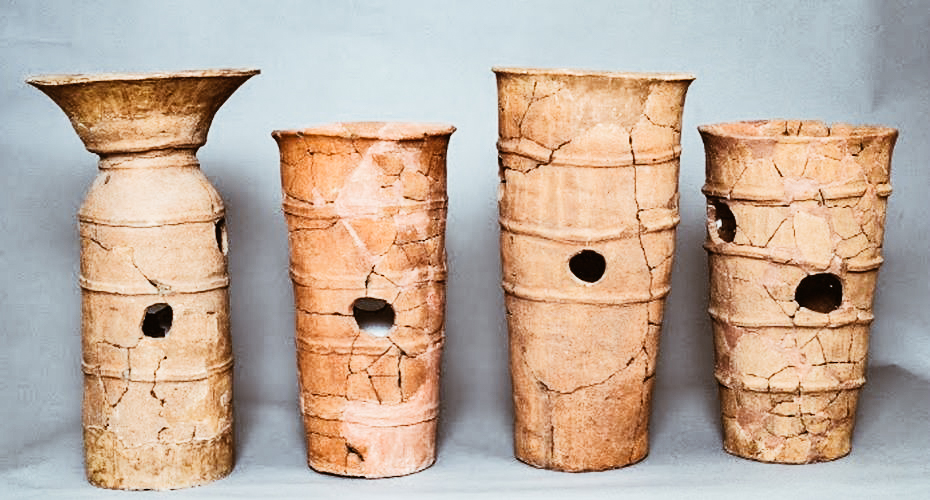
photo credits: smarthistory.org
In the Museum of Sakitama Ancient Burial Mounds we find a collection of artifacts, which later became national treasures. In fact, in the rooms of this museum, we see extremely valuable resources that will let you understand the ancient history of Japan.
If you think it is still not enough and you feel the desire to walk virtually through the cities of Japan, today it is possible! In fact, visiting the buildings and streets of the Rising Sun becomes easy thanks to Google Street View. Here millions of absolutely breathtaking panoramic images that will make you dream and transport you beyond any geographical border!
14th Japan International Manga Award
14th Japan International Manga Award
written by: SaiKaiAngel
If you know and love the Manga culture, you cannot miss the MANGA AWARD! Do you know how to draw or simply love manga so much that you spend a good part of the day on this topic? We think you should stop for a moment and read this very important announcement. We find the positive in a moment in which we must necessarily stay at home! Let's dedicate ourselves to make our Manga works even better and take part in this beautiful initiative!
The application period for the 14th Japan International MANGA Award runs from April 6, 2020 to June 19, 2020. MANGA artists from all over the world, JOIN THE CHALLENGE!

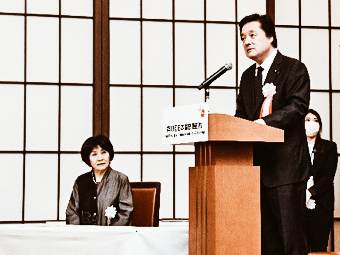
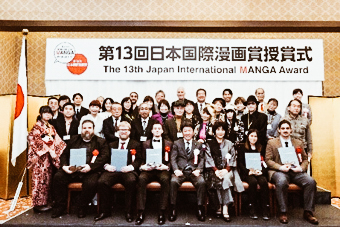
Here are the simple and easy instructions:
Why is it important?
Because the MANGA is much more than two big eyes full of enthusiasm and fun. It is a real CULTURE and it is also a way to destroy borders and promote international cultural exchanges!
Are there any prizes?
Of course! The Japan International MANGA Award for the best MANGA work, the Silver Award for three excellent works, and the Bronze Award for eleven other works.
The winners of the Gold Award and the Silver Award, therefore not the winners of the Bronze Award, will be able to take advantage of the invitation to Japan for 10 days at the award ceremony!
How can you participate in the International Manga Awards?
MANGAs must consist of more than 16 pages. You can submit Manga works that have already been published or not, obviously, the winning works of the past editions of the Japan International Manga Awards will not be accepted.
Which MANGA works are accepted?
MANGA works must have been produced in the past three years (2017-2020).
In what form are MANGA works accepted?
MANGA works must be presented in printed form.
Can publishers participate in the Manga Awards?
Overseas publishers can participate in the Japan International MANGA Award, after confirmation by MANGA artists to present their work. The artist or screenwriter of the work presented must be foreign citizens. The representative who will participate in the invitation for the winners of the Gold and Silver awards must also be foreign citizens.
How many works can be presented?
Each participant must submit only one work. In the case of a story collection, only one will be accepted. Duplicates are invalid.
How does the Manga Award nomination work?
Applying is simple! You must send your registration from April 6 to June 19 2020 to:
1) Japanese embassies or consulates
or to:
2) P.O.Box MBE193 The 14th Executive Committee of the MANGA International Award of Japan Shinjuku Oak Tower 2F, 6-8-1 Nishi-Shinjuku, Shinjuku-ku, Tokyo, Japan, 163-6002
Two copies of the work must be sent, despite this, additional copies may be required in the case of a prize.
Attached to the MANGA work, there must be a completed registration form in English or Japanese. The numbers must be indicated on each page of the MANGA work. If the MANGA work does not take the form of a book, it must be specified.
Will MANGA works be returned?
No, the submitted MANGA works will not be returned to the candidates. Therefore, if the work has not yet been published, it is advisable to send a copy of the work and keep the original. Keep in mind that the works presented could be donated or exhibited.
The Executive Committee of the MANGA Prize may (partially) upload the winner's MANGA works to its website with the prior approval of the artists.
Who is in charge of the selection?
The 14th MANGA International Japan Award Selection Committee will be responsible for the selection procedures.
Remember that the award ceremony will be held in Tokyo in February 2021.
You can have the opportunity not only to win prizes, not only to make your MANGA work known all over the world but also to be invited to Japan! What are you waiting for? You still have time to register and participate. We are curious to see your MANGA works, hurry up!! Make this moment even more fun and productive.
Further information: manga-award.mofa.go.jp
Guidelines:
The 14th Japan International MANGA Award Guidelines for Application
The 14th Japan International MANGA Award Entry Form












